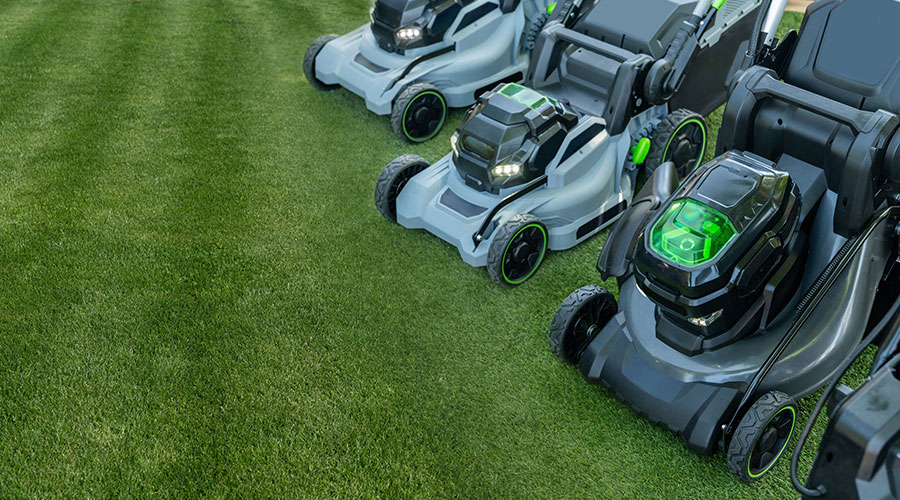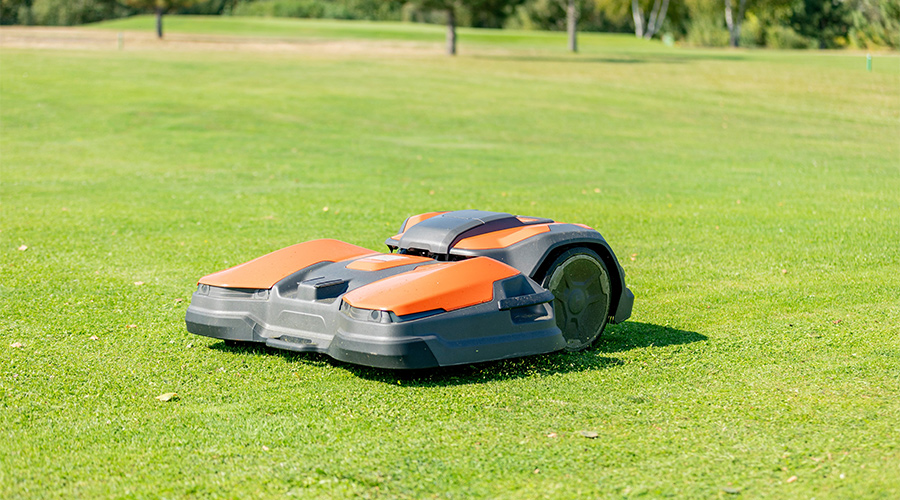Expanding fleets, growing solutions
Managers fine-tuning maintenance and inspection programs can rely on manufacturers for online answers and dealer support
Expanding Fleets, Growing Solutions
The premise for implementing new technology into a maintenance department is the product will help managers do their jobs more efficiently and cost effectively.
Of course, that is not always the case. But for grounds managers who must maintain a diverse fleet that can include mowers, utility vehicles, skid steers, pickup trucks, and front-end loaders, computerized maintenance management systems (CMMS) and other tools can help track preventive maintenance and costs associated with their equipment. Manufacturers also maintain close relationships with their dealers, who act as liaisons between the end user and the manufacturer.
Managers can rely on new technology, as well as dialogue with dealers, to develop, implement, and fine-tune a fleet inspection and maintenance program for their organizations.
Changing Landscapes
As grounds managers in institutional and commercial facilities know, today’s fleets go beyond mowers and utility vehicles. Organizations are investing many thousands of dollars in larger, light-construction equipment to properly maintain landscaped areas that complement the facilities’ appearance.
Most managers are familiar with the preventive maintenance tasks and common operating issues surrounding traditional fleet equipment. But as fleets become more diverse, mechanics and operators need to learn the maintenance involved with various pieces of equipment becoming commonplace in grounds departments. Keeping records, tracking preventive maintenance and monitoring equipment life-cycle costs can be a taxing job.
Before developing its fleet management program, The Toro Co. consulted mechanics and golf-course superintendents to gauge features they would value in a CMMS.
“The bottom line was that mechanics wanted us to help make their jobs easier,” says Carlos Calderón, senior services marketing manager at The Toro Co. “They wanted to be able to order the right parts and order all the parts that they needed.”
Although golf is a large market for Toro and its software, the CMMS is not limited to golf-course management, Calderón says.
“Our markets are both golf and what we call sports fields and grounds,” he says. “Sports fields and grounds being municipalities, sports teams, sports fields, cemeteries, high schools — you name it.”
During his research, Calderón and other Toro officials learned some managers were not using a CMMS for fleet management due to the amount of data entry required. Toro’s goal was to create a user-friendly experience that minimized data entry and the amount of time in front of a computer.
“If you don’t do your data entry, the hill becomes a mountain,” he says. “Once it becomes a mountain, the last place you want to go in our industry is that computer because (the work) is waiting for you there.”
One area where data entry comes into play is the preventive maintenance portion of fleet management. Every department has a different method for tracking preventive maintenance, and manufacturers are working to make the documentation process as turnkey as possible.
Tracking Preventive Maintenance
Managers with Bobcat Co. equipment do not have to go very far to determine when preventive maintenance is due.
“For us, in all of our machines, we have a maintenance scorecard in the back to tell you how often to check each item,” says Rob Gilles, marketing manager with Bobcat Co.
Customers also have the option of specifying an automated panel on their machines that gives audible warnings when it is time for preventive maintenance. The warnings tell the operator how many hours it has been since certain preventive maintenance tasks were last completed.
Bobcat also has an oil-analysis program for any machines using hydrostatic oil, Gilles says. The program assists operators in taking samples of their machines’ oil, helping identify contaminants, ensure lubricant integrity, identify minor problems before they become major failures, maximize asset reliability, and increase resale value.
Toro’s fleet-management program also addresses the task of tracking preventive maintenance. As technicians enter the amount of hours logged on a piece of equipment, the program automatically loads service schedules. When preventive maintenance is due, the box next to the piece of equipment turns red. The program takes the user to the work-order page, which explains the required activities. The program builds a work order, and mechanics can perform the maintenance.
“That’s what helps them make sure (preventive maintenance) gets done,” Calderón says. “It helps them track maintenance activities and costs.”
With Toro’s CMMS, the work order tracks all the parts and labor costs associated with a certain maintenance activity. At the end of a season, managers can reference the work orders online, rather than having to shuffle through folders and paperwork to determine the amount of money spent. Tracking maintenance costs can help managers down the road when trying to justify replacing a piece of equipment.
Whatever the method, manufacturers know preventive maintenance is a vital component to a department’s fleet-management program. Performing daily checks on oil levels, tire-air pressures, air-filter condition, coolant levels, and radiator blockage is all part of an effective maintenance plan, says Ray Schroth, director of service at Kubota Tractor Corp.
“This will help catch maintenance needs before they turn into problems,” Schroth says. “It’s all about being proactive.”
Dealer Relationships
John Deere’s approach to fleet management begins with a strong relationship between the company’s dealer network and the end user. In 1998, John Deere developed a program for homeowners where dealers would travel to individual homes to perform preventive maintenance and service on the customers’ equipment. The company now has expanded its mobile services to include commercial and institutional organizations.
“In the last two years, we have been taking that same business model and trying to deliver mobile services back to fleet owners,” says John Carson, John Deere’s manager of service marketing.
Managers in organizations that do not have a technician in-house can call their dealers to provide both preventive maintenance and repair work. The dealers also use a spreadsheet to assist in keeping the department’s maintenance records.
“The main problem is (some department’s) fleets may not be large enough or robust enough to have full-time technicians,” Carson says.
John Deere also has equipped its dealers with software designed to make its mobile-services program more efficient. Dealers can take laptops on the road and access the program, which allows them to build a customer profile and access parts information. This program helps ensure problems are fixed in a more timely manner, reducing downtime.
Beyond Equipment
Properly managing a fleet is not just about equipment maintenance. Managers need to keep a close eye on who is operating their grounds equipment, ensuring the operator has undergone the proper training before taking the helm.
“Many times, particularly in fleet management, the operator and owner of a given machine is not the same individual,” says Kubota’s Schroth. “So it is important that all operators review the operator’s manual, including literature covering attachments. In addition, it’s a good practice to assign individual responsibilities for various aspects of regular maintenance, including daily lubrication and walk-around checks.”
As grounds managers continue to incorporate new, specialized equipment into their fleets, they might need to educate their staffs on safe operation and maintenance practices.
“We have safety training kits available for all our product lines,” Gilles says. “It’s an operations and maintenance manual that walks you through the maintenance.”
Toro provides training through its CMMS, and Calderón says personnel fluctuation also can affect how departments perform their maintenance. When training new technicians, managers typically have to explain the process of maintaining the equipment, including tracking hours of use and determining when preventative maintenance is due. Toro’s program provides new workers with a system to follow, making it easier for employees to learn a department’s standard operating procedures.
Through online solutions and dealer support, manufacturers are working to ensure grounds managers have options when trying to develop, implement and fine-tune a maintenance and inspection program for their equipment.
Says Schroth, “Proper maintenance is an ongoing investment that improves the performance and prolongs the lifespan of machinery.”
Related Topics:











